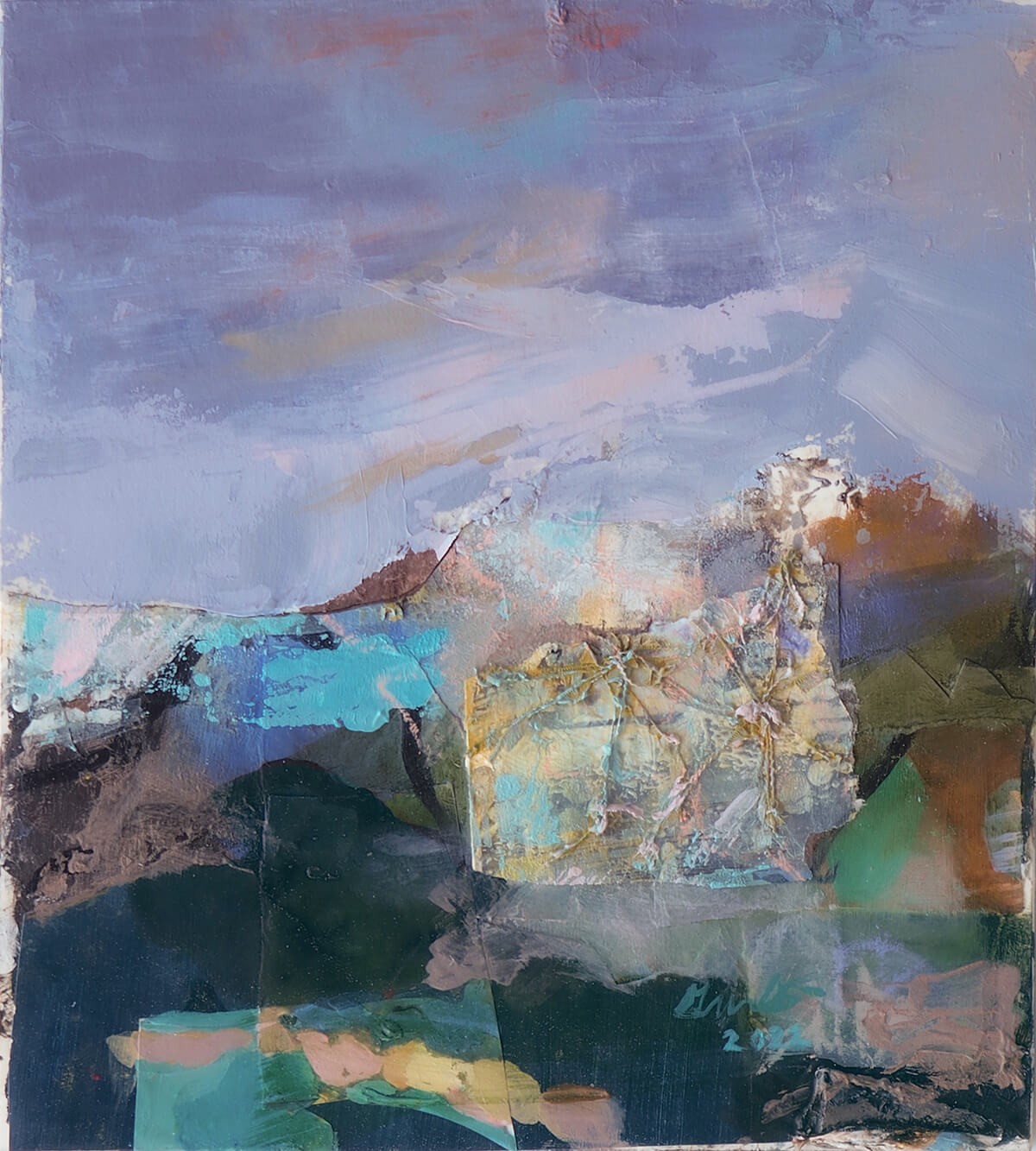1275 Minnesota St /
Anglim / Trimble Gallery
Biology of Flight presents paintings and collages that layer memory and meaning. As color, shape, and pattern combine on the picture plane, stories from childhood, fables, and the artist’s delight and concern for Nature appear.
Grace grew up in a Japanese-American home. Her parents were second-generation Nisei. In the kitchen, gestural senryu poetry panels hung near a painting of the Golden Gate Bridge. In a glass and black lacquer wood box, a formal Japanese doll stood next to companions: a porcelain bouquet of flowers, a wooden bear, and rabbit; a plastic teepee whose colored strip predicted the weather; a huge yellow candle shaped like an overgrown rose. To the artist, as a child, they all went together. That was and is her normal.
When time allowed, Grace’s father practiced Japanese painting, sumi-e, at the Formica kitchen table. Her early memories include watching brush marks magically become fish, flowers, and grasshoppers. Her mother was a seamstress. Her drawers were full of patterned cottons and raw silk, polka dots, plaid, and paisley; every conceivable hue of thread, jewel-like buttons. Abstract pattern pieces spread over the floor. Transformations occurred regularly. An old shirt became an apron. Scraps of iridescent taffeta became gowns for Japanese dolls on the mantle at Christmas. Gestural marks, mixed patterns, and scraps on the “tailor’s floor” were always part of her process.
Grace’s current work combines this history with her increasing concern for ecology. Habitats are interconnected, specific plants summon specific insects, birds, and mammals. The inconspicuous are as essential as flagship animals but require close looking. A drab wrentit hides among dark abstract shapes, unnoticeable like the actual birds, who sing loudly hidden deep inside a bush. In another piece, a pumpkin walks as colored droplets frown, and bees alight on fabric flowers. Fragments accumulate and hold disparate things together, a community as natural as that lacquered box from her childhood. Each piece becomes a site where attention shifts and refocuses, creating opportunities for us to pause and consider our relationship to Nature.
Paintings can be an alternate world, where there is abundance to sustain all, knowing well this is not true in daily life. Habitat loss and warming are here. Sankaku Daruma, the triangle people, sometimes appear in Grace’s work. Bringing good luck, they acknowledge obstacles: fall seven times, rise eight times. In daily life we can emulate their tenacity to take care of and restore natural connections. That can begin as simply as introducing a particular plant to the sidewalk verge.
Centuries ago in rural Japan, bare spots on clothing or blankets were patched with fabric scraps, or boro. Stitches layered patches on patches through generations. This mending, re-using, prolonging, and transforming are expressions of “mottainai,” meaning a shame to waste and great appreciation. Everything can carry a spirit: ladles, tools, rocks, trees, animals, echoes. Thus, the life of all things and beings is honored and nothing is discarded that can be reshaped.
